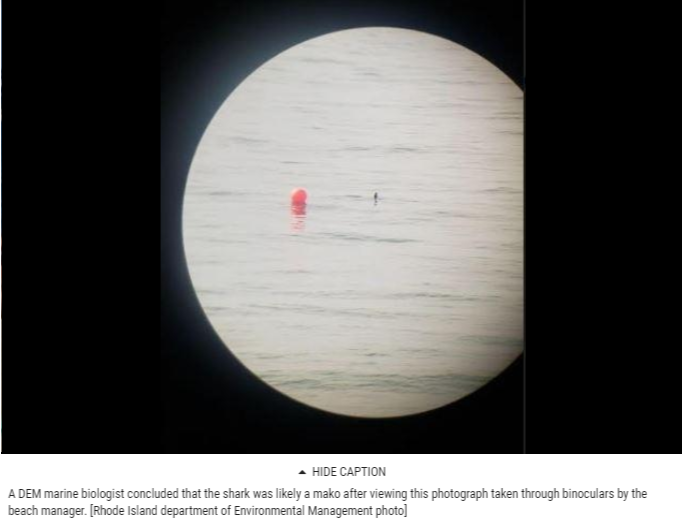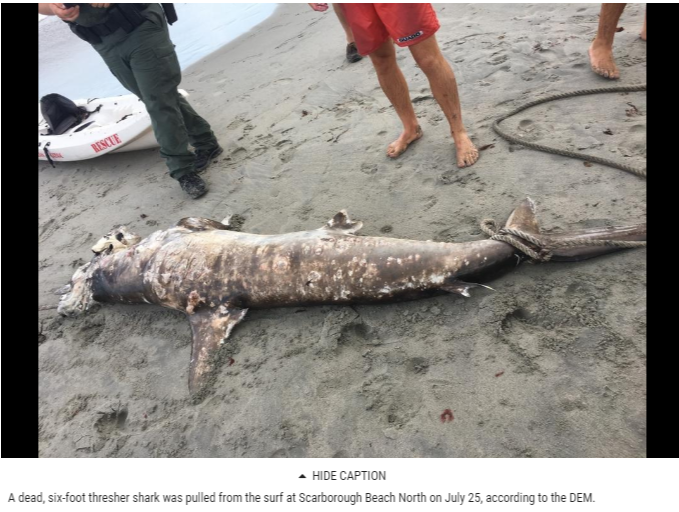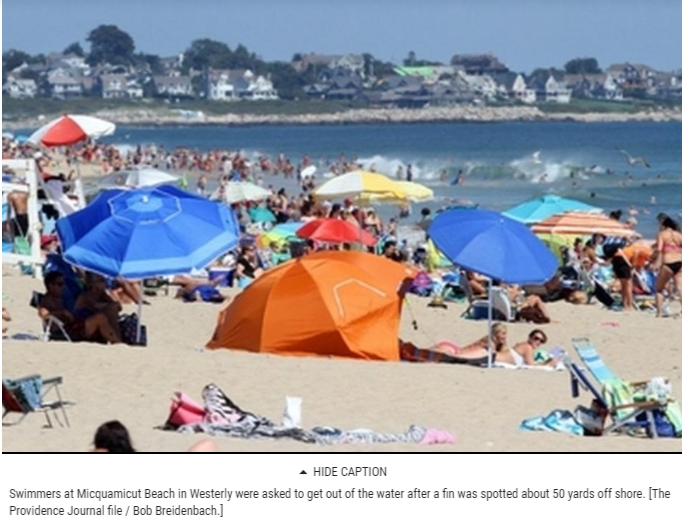Water cleared after shark spotted off Misquamicut State Beach
The Providence Journal delivers accurate, timely news about the moments that matter most. To receive stories like this one in your inbox, sign up here.
WESTERLY — Swimming was restricted at Misquamicut Beach on Friday morning after what appeared to be a shark fin was spotted about 50 yards from shore, according to the Rhode Island Department of Environmental Management.
The fin was spotted at about 9:45 a.m. by lifeguards, beach goers and the beach manager, according to Michael Healey, chief public information officer for the DEM. Beach goers were asked to get out of the water and then prohibited from going back in beyond their ankles until 11:30 a.m., according to Healey.

At about 10:30 a.m., a second fin was spotted, much farther from shore, according to Healey.
DEM protocol is to keep swimmers out of the water for an hour after a sighting.
A DEM marine biologist said the fin was most likely that of a mako shark, according to Healey. The marine biologist came to that conclusion after seeing a photograph of the fin that the beach manager shot through binoculars, he said.
“A key part of our notification protocol is having the beach manager and lifeguards take a picture of the shark, if possible, and text it to our marine biologists,” Healey said in an emailed message. “Also, we ask them to carefully watch the shark as it moves around to get a sense of how it swims.”
He said the fin didn’t look high enough to be a great white’s, nor was it flopping to the side like a sunfish’s would. Healey noted that a variety of sharks, including sand tigers, travel through Rhode Island waters, and a dead, six-foot thresher shark was pulled from the surf at Scarborough North on July 25.
Mako sharks can grow to 13 feet long. They’re found along the East Coast, from Florida to New England, according to the National Oceanic and Atmospheric Administration.
They’re considered the fastest shark species and can swim at up to 43 mph., according to the University of Florida.
Makos spend most of their time far offshore, but have been linked to attacks on humans.

“Although an oceanic species, the shortfin mako’s power and speed, make it potentially dangerous to humans,” USF’s Florida Museum of Natural History says on its website. “Shortfin makos been implicated in 10 unprovoked attacks on humans, one of which resulted in a fatality.
“Divers who have encountered shortfin makos note that they often swim in a figure eight pattern and approach with mouths open prior to an attack. Shortfin makos frequently damage boats and injure fishers after being hooked,” the website says.
While makos typically swim in deeper waters, the DEM believes a search for food could have drawn this shark closer to shore.
“Makos are some of the most legendary swimmers in the ocean. They’re fast, agile, powerful, and can swim thousands of miles in a summer searching for prey,” Healey said. “Currently, there’s an abundance of prey fish such as menhaden, blues, and small stripers, which are important parts of a Mako’s diet, close to shore in Rhode Island.
“Historically and anecdotally, usually once or twice a summer, we’ll hear from commercial fishermen who catch Makos in gill nets within three miles of shore, so we know that hypothesizing it’s a Mako isn’t unreasonable,” he said.
Rhode Island hasn’t had an uprovoked shark attack since 1955, according to the DEM. It hasn’t had a fatal attack since 1895.


